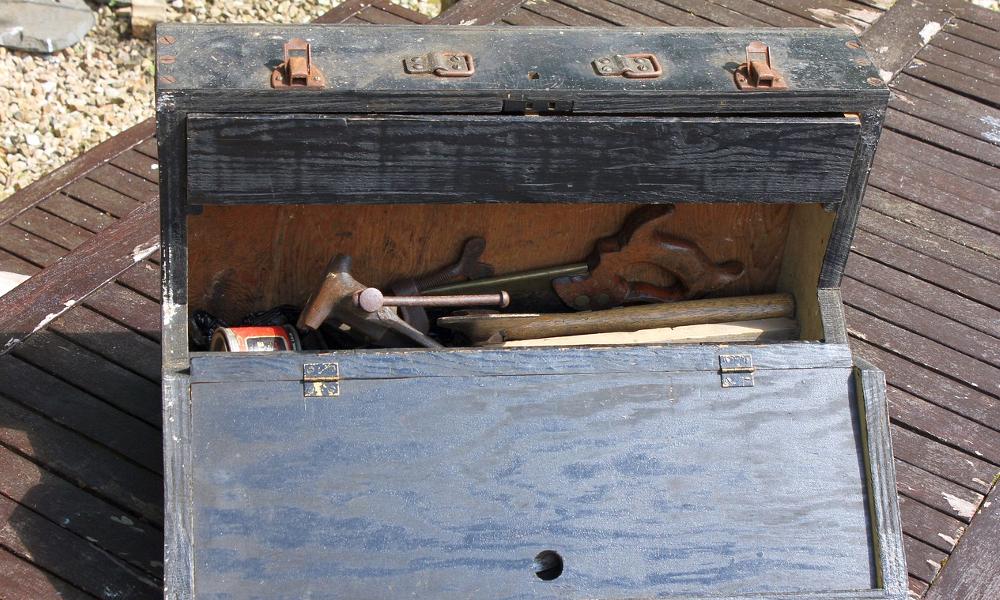Image


Image by bluebudgie from Pixabay
Podman is well known for its seamless integration into modern Linux systems, and supporting systemd is a cornerstone in these efforts. Linux commonly uses the systemd init system to manage local services such as web servers, container engines, network daemons, and all of their interdependencies. Extending these more traditional Linux system administration practices with the modern world of containers is a natural evolution.
There are two common use cases for combining systemd and containers:
The first scenario is running systemd inside of a container. As Dan Walsh explains, running systemd inside a container is as simple as it can be when using Podman. Podman automatically sets up several mounts in the container, and systemd is good to go. While it's a comparatively small Podman feature, it was a huge leap for running containerized workloads when it was introduced.
Historically, other container tools have not supported systemd. Users faced the challenge of writing custom init scripts, which are prone to errors and a support burden for software vendors. With Podman, all these issues go away. Users can use systemd to install and run their applications in containers, just like anywhere else, and software vendors will not face the challenges of dealing with custom init scripts written by their users.
The second scenario is using systemd to run and manage containerized applications. That means systemd starts a containerized application and manages its entire lifecycle. Podman simplifies this with the podman generate systemd command, which generates a systemd unit file for a specified container or pod. Podman v1.7 and later support generating such units. Over time, our team has improved this feature and generated systemd unit files that can run on other machines, similar to using a Kubernetes YAML or a Compose file. Furthermore, the tight integration with systemd laid the foundation for auto-updates and simple rollbacks, supported since Podman v3.4.
While there are many earlier blogs and articles on generating systemd units for containers, there are none for generating these units for pods. But before going into these details, I want to review what a pod is.
[ Getting started with containers? Check out this free course. Deploying containerized applications: A technical overview. ]
There are several different parts in a pod, and I think Brent Baude explains it best with the great figure below:
The first thing to notice is that a pod consists of one or more containers. The group shares control groups (cgroups) and specific namespaces such as the PID, network, and IPC namespace. The shared cgroups ensure that all containers have the same resource constraints. The shared namespaces allow the containers to communicate with each other more easily (such as through localhost or interprocess communication).
You can also see a special infra container. Its primary purpose is to hold specific resources associated with the pod open, such as ports, namespaces, or cgroups. The infra container is the pod's top-level container, and it's created before other containers and destroyed last. You use the infra container when generating systemd units for a pod, so keep in mind that this container runs for the pod's entire lifespan. It also implies that you cannot generate systemd units for pods without an infra container (such as --infra=false).
Last but not least, you see multiple conmon processes running, one per container. "Common" is short for container monitor, which sums up its main functionality. It also takes care of forwarding logs and performing cleanup actions once the container has exited. The conmon process starts before the container and instructs the underlying container runtime (such as runc or crun) to create and start the container. It also exits with the container's exit code allowing for using it as a systemd service's main process.
Podman generates exactly one system unit for a container. Once installed, use systemctl to start, stop, and inspect the service. The main PID of each unit is the container's conmon process. This way, systemd can read the container's exit code and act according to the configured restart policy. For more details on the units, please refer to Running containers with Podman and systemd shareable services and Improved systemd Podman with Podman 2.0.
Generating units for a pod is very similar to starting a container. Each container in the pod has a dedicated systemd unit, and each unit depends on the pod's main systemd unit. This way, you can continue using systemctl to start, stop, and inspect the pod's main service; systemd will take care of (re)starting and stopping the containers' services along with the main service.
This example creates a pod with two containers, generates unit files for the pod, and then installs the files for the current user:
$ podman pod create --name=my-pod
635bcc5bb5aa0a45af4c2f5a508ebd6a02b93e69324197a06d02a12873b6d1f7
$ podman create --pod=my-pod --name=container-a -t centos top
c04be9c4ac1c93473499571f3c2ad74deb3e0c14f4f00e89c7be3643368daf0e
$ podman create --pod=my-pod --name=container-b -t centos top
b42314b2deff99f5877e76058ac315b97cfb8dc40ed02f9b1b87f21a0cf2fbff
$ cd $HOME/.config/systemd/user
$ podman generate systemd --new --files --name my-pod
/home/vrothberg/.config/systemd/user/pod-my-pod.service
/home/vrothberg/.config/systemd/user/container-container-b.service
/home/vrothberg/.config/systemd/user/container-container-a.service
As expected, Podman generated three .service files, one for each container plus the top-level one for the pod. Please refer to the appendix at the end of the article to see the entire contents of the unit files. The units generated for the two containers look like standard container units plus the following systemd dependencies:
BindsTo=pod-my-pod.service: The container unit is "bound" to the unit of the pod. If the pod's unit is stopped, this unit will be stopped, too.After=pod-my-pod.service: The container unit starts after the unit of the pod.The pod's main service's dependencies further make sure that if a container unit does not start successfully, the main pod's main unit will also fail.
That is all you need to know about generating systemd units for pods with Podman. Once you've reloaded systemd via systemctl --user daemon-reload, start and stop the pod.service at will. Have a look:
# Reload the daemon
$ systemctl --user daemon-reload
# Start the pod service and make sure the service is running
$ systemctl --user start pod-my-pod.service
$ systemctl --user is-active pod-my-pod.service
active
# Make sure the pod and its containers are running
$ podman pod ps
POD ID NAME STATUS CREATED INFRA ID # OF CONTAINERS
6dd1090d4ca6 my-pod Running 2 minutes ago 85f760a5cfe5 3
user $ podman container ps
CONTAINER ID IMAGE COMMAND CREATED STATUS PORTS NAMES
85f760a5cfe5 localhost/podman-pause:4.0.2-1646319369 5 minutes ago Up 5 minutes ago 6dd1090d4ca6-infra
44a7e60b9563 quay.io/centos/centos:latest top 5 minutes ago Up 5 minutes ago container-b
31f24bdff747 quay.io/centos/centos:latest top 5 minutes ago Up 5 minutes ago container-a
Great, everything is working as expected. You can use systemctl to start the services, and Podman lists the pods and their containers correctly. For the sake of consistency, have a final look at how to stop the pod service.
# Stop the pod service
$ systemctl --user stop pod-my-pod.service
# Make sure the pod and its containers are removed
$ podman pod ps -q
$ podman container ps -q
# Make sure the services are inactive
$ systemctl --user is-active pod-my-pod.service container-container-a.service container-container-b.service
inactive
inactive
inactive
The take-home message is that Podman generates systemd units for pods just as it does for containers. The dependencies among these units are set in a way that you just need to interact with the pod's main unit, and systemd takes care of starting and stopping the containers' units.
Podman generates the following unit files for a pod and the two related containers.
pod-my-pod.service
Description=Podman pod-my-pod.service
Documentation=man:podman-generate-systemd(1)
Wants=network-online.target
After=network-online.target
RequiresMountsFor=
Requires=container-container-a.service container-container-b.service
Before=container-container-a.service container-container-b.service
[Service]
Environment=PODMAN_SYSTEMD_UNIT=%n
Restart=on-failure
TimeoutStopSec=70
ExecStartPre=/bin/rm -f %t/pod-my-pod.pid %t/pod-my-pod.pod-id
ExecStartPre=/usr/bin/podman pod create --infra-conmon-pidfile %t/pod-my-pod.pid --pod-id-file %t/pod-my-pod.pod-id --name=my-pod --replace
ExecStart=/usr/bin/podman pod start --pod-id-file %t/pod-my-pod.pod-id
ExecStop=/usr/bin/podman pod stop --ignore --pod-id-file %t/pod-my-pod.pod-id -t 10
ExecStopPost=/usr/bin/podman pod rm --ignore -f --pod-id-file %t/pod-my-pod.pod-id
PIDFile=%t/pod-my-pod.pid
Type=forking
[Install]
WantedBy=default.target
container-container-a.service
[Unit]
Description=Podman container-container-a.service
Documentation=man:podman-generate-systemd(1)
Wants=network-online.target
After=network-online.target
RequiresMountsFor=%t/containers
BindsTo=pod-my-pod.service
After=pod-my-pod.service
[Service]
Environment=PODMAN_SYSTEMD_UNIT=%n
Restart=on-failure
TimeoutStopSec=70
ExecStartPre=/bin/rm -f %t/%n.ctr-id
ExecStart=/usr/bin/podman run --cidfile=%t/%n.ctr-id --cgroups=no-conmon --rm --pod-id-file %t/pod-my-pod.pod-id --sdnotify=conmon -d --replace --name=container-a -t centos top
ExecStop=/usr/bin/podman stop --ignore --cidfile=%t/%n.ctr-id
ExecStopPost=/usr/bin/podman rm -f --ignore --cidfile=%t/%n.ctr-id
Type=notify
NotifyAccess=all
[Install]
WantedBy=default.target
container-container-b.service
[Unit]
Description=Podman container-container-b.service
Documentation=man:podman-generate-systemd(1)
Wants=network-online.target
After=network-online.target
RequiresMountsFor=%t/containers
BindsTo=pod-my-pod.service
After=pod-my-pod.service
[Service]
Environment=PODMAN_SYSTEMD_UNIT=%n
Restart=on-failure
TimeoutStopSec=70
ExecStartPre=/bin/rm -f %t/%n.ctr-id
ExecStart=/usr/bin/podman run --cidfile=%t/%n.ctr-id --cgroups=no-conmon --rm --pod-id-file %t/pod-my-pod.pod-id --sdnotify=conmon -d --replace --name=container-b -t centos top
ExecStop=/usr/bin/podman stop --ignore --cidfile=%t/%n.ctr-id
ExecStopPost=/usr/bin/podman rm -f --ignore --cidfile=%t/%n.ctr-id
Type=notify
NotifyAccess=all
[Install]
WantedBy=default.target




Container engineer at Red Hat, bass player, music lover. More about me